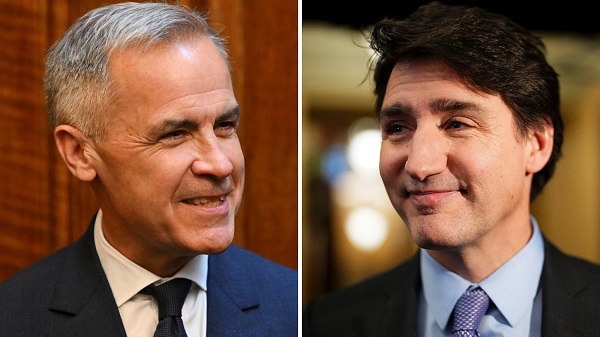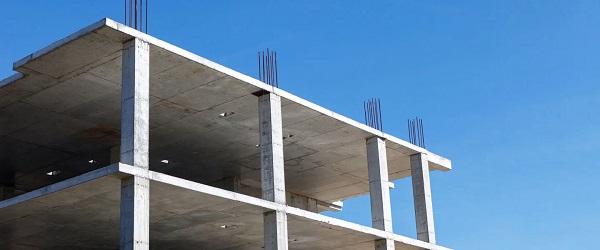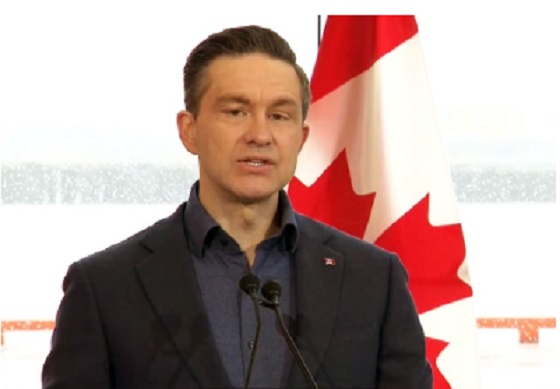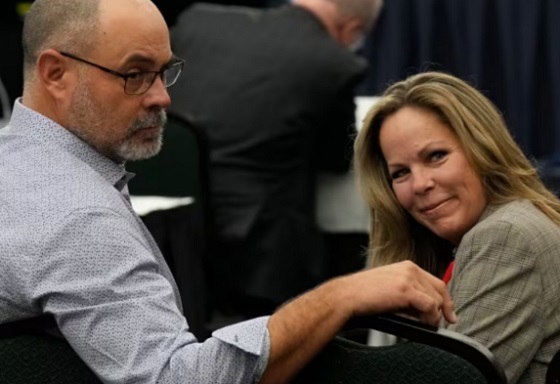Business
Ottawa’s Spending Binge Is Killing Growth

From the Frontier Centre for Public Policy
By Ian Madsen
The government spends more every year, but your standard of living hardly budges. So is all that spending really working?
The idea that government spending drives economic growth is not just mistaken—it’s economically destructive.
Politicians routinely describe higher government spending as “stimulative” and any attempt to slow it as “austere” or anti-growth. Some even label modest increases “restrictive” if they don’t match prior growth rates. But this thinking isn’t supported by evidence. Canada’s own experience proves that rising public spending has not translated into prosperity. In fact, it has done the opposite.
For the past decade, government spending in Canada has grown faster than the economy. According to Statistics Canada, federal debt exploded from $649 billion in 2014 to nearly $1.44 trillion in 2024, a compound annual growth rate (CAGR) of 8.3 per cent (CAGR is the average annual growth rate that accounts for the effect of compounding over time, meaning each year’s growth builds on the previous year’s total). Over the same period, GDP grew at just 1.76 per cent annually. Public sector spending grew at 2.2 per cent: it outpaced economic growth and added to the country’s debt burden.
Canada’s population rose from 35.6 million to 41.5 million during this time, a CAGR of 1.55 per cent. Real per capita GDP—an indicator of how much wealth each Canadian is generating—grew by just 0.2 per cent annually, meaning Canadians saw minimal gains even as debt ballooned.
Government spending crowded out private sector productivity and left a growing burden for future generations.
Contrast that with the decade before. Between 2004 and 2014, including the 2008 recession, GDP grew at 1.9 per cent annually. Federal spending increased at a more restrained 3.3 per cent rate. Population growth was lower, just one per cent annually, but real per capita GDP rose by nearly one per cent per year. Less aggressive government spending coincided with stronger economic performance and higher individual prosperity.
This should not be surprising. Government spending typically flows into consumption (such as transfers to individuals), health care, education, law enforcement, administration and infrastructure. While some of these services are essential, they don’t inherently generate productivity or long-term economic value.
Take infrastructure: Ottawa’s single largest project has been the Trans Mountain pipeline expansion, $33 billion and counting, for a route that already existed. Then there’s the $2.7 billion handed to Northvolt for a now-bankrupt electric vehicle battery plant.
Other examples of waste include the CBC, which received $1.44 billion in taxpayer funds in 2023–24; Canada Post, which absorbed another $748 million; and the Phoenix payroll debacle, which has cost taxpayers $3.5 billion since 2016. These are just a few examples of how public money is routinely misallocated.
Meanwhile, the federal workforce has ballooned. Since 2014, Ottawa has added more than 110,000 employees, a 43 per cent increase, while the population grew by just 16.6 per cent. Had the public service merely kept pace with population growth, it would have added only 42,465 positions.
Instead, taxpayers are on the hook for 57,535 extra employees. With the average personnel cost pegged at $178,500, this adds $10.3 billion to the annual payroll—enough to meet Canada’s NATO defence spending target of two per cent of GDP, a longstanding but unmet commitment to our allies.
Despite massive increases in health spending, wait times have worsened and millions still lack a family doctor. More money hasn’t meant better outcomes.
At least three academic studies have confirmed what the numbers already show: as government spending rises, GDP growth declines. The evidence is already overwhelming—we don’t need more studies. We need action.
Canada must reverse course: spend less, spend smarter and direct public dollars where they generate lasting value. If we don’t, we’re guaranteeing long-term stagnation and unsustainable debt.
Ian Madsen is a senior policy analyst at the Frontier Centre for Public Policy.
Automotive
McTeague: Carney’s EV mandate is a FRAUD and HOAX

By Dan McTeague
It’s time for Prime Minister Mark Carney to punt the EV mandate to the curb.
The evidence keeps mounting — Canadians aren’t ready for a mass adoption of electric vehicles. Fewer Canadians are purchasing EVs, our EV charging infrastructure is nowhere near ready, and even auto dealers are pushing back against the EV mandate.
Dan McTeague explains why this net-zero scheme is a fraud and a hoax.
Business
Ontario’s housing mess bad news for Canadians across the country

From the Fraser Institute
By Jake Fuss and Austin Thompson
According to new data from CMHC, homebuilding in Ontario plummeted in the first half of 2025 compared to prior years, making Premier Ford’s target of 1.5 million new homes by 2031 look increasingly farfetched. The weak numbers also undermine the Carney government’s pledge to double national homebuilding by 2035—a goal that was already very unrealistic. But the failure to increase homebuilding levels in Ontario does more than tarnish the reputation of politicians who make promises they can’t keep—it frustrates progress towards housing affordability in Ontario and across the country, harming Canadians who are priced out of the housing market or struggling to pay the rent.
In the first six months of 2025, construction began on only 27,368 new homes in Ontario—a staggering 25 per cent drop compared to the same six-month period in 2024, and 35 per cent below the first half of 2023. In fact, Ontario saw more housing starts in the first half of 2020 (33,588) despite disruptions caused by the COVID-19 pandemic.
More broadly, from 2022 to 2024, Ontario averaged only 86,650 housing starts each year—far short of the 150,000 starts per year required to meet the Ford government’s target of 1.5 million new homes by 2031.
Across Ontario’s municipalities, homebuilding trends vary significantly. Some cities have achieved notable growth—for instance, Ottawa recorded 5,150 housing starts in the first half of 2025, an 82 per cent increase compared to the same period last year. Others have seen construction nearly grind to a halt. In Guelph, just 46 new homes were started in the first half of the year—a 76 per cent drop from the same period in 2024. And Toronto recorded a paltry 12,575 housing starts in the first half of this year—a 44 per cent decline from the same period in 2024. Given its size, Toronto’s poor performance is especially consequential.
While building more homes remains a challenge across much of Canada, the particularly sharp decline in Ontario undermines national progress. Again, in the first half of 2025 housing starts in Ontario fell by 25 per cent compared to last year. Meanwhile, the rest of Canada saw a 17 per cent increase in the first half of 2025. In absolute terms, 9,003 fewer homes were built in Ontario relative to last year while 12,921 more homes were added in the rest of the country. That’s a problem for all Canadians looking to buy a house, because as the country’s most populous province, Ontario’s homebuilding slowdown has nearly cancelled out the gains made elsewhere.
In other words, the trends in one housing market can have spillover effects in other markets. When the country’s largest province stumbles, it drags national progress down with it. The consequences ripple outward—people priced out of Ontario drive up housing costs elsewhere. Sky-high prices in economic hubs such as Toronto push workers away from where jobs are most plentiful. And inflated housing costs feed household debt, leaving Canadians more exposed in the next economic downturn.
This is all happening despite billions of taxpayer dollars being spent on initiatives meant to boost homebuilding. In this year’s provincial budget, the Ford government earmarked an additional $400 million for the Housing-Enabling Water Systems Fund (which helps expand water systems for new housing development) and the Municipal Housing Infrastructure program (on top of the $2 billion the government plans to spend on these two programs until 2027). The Ontario government will also spend $325 million (over seven years) on a joint project with the federal government and City of Toronto for the waterfront revitalization plan, which includes new housing development. This spending is helping drive major increases in the province’s debt, while barely moving the needle on housing supply.
Of course, housing costs depend on supply and demand. The demand side, fuelled mainly by federal immigration policy, remains out of the Ontario government’s control. But Ontario and its municipalities can help improve housing supply—unfortunately, they have instead allowed significant barriers to persist. For example, the Ford government has decided not to allow four-unit homes on residential lots, ignoring a key recommendation of its own Housing Affordability Task Force. And housing developers in Toronto and Hamilton face the longest wait times in the country to receive municipal approvals to start building—these two cities also charge some of the highest upfront fees on new housing development in the country, discouraging new construction.
If policymakers in Ontario are serious about tackling the housing crisis, they should remove these self-imposed barriers to homebuilding. While Ontario’s housing failures are felt most acutely by its residents—through high prices and limited options—the fallout reaches far beyond provincial borders. No serious effort to address housing affordability in Canada can succeed without Ontario getting its house in order.
-

 Addictions13 hours ago
Addictions13 hours agoGovernments ease alcohol access as evidence of its harms mount
-

 COVID-1912 hours ago
COVID-1912 hours agoCOVID shot mandates persist for Ontario health workers despite staffing crisis
-

 Daily Caller14 hours ago
Daily Caller14 hours agoTom Homan Details Search For 300,000 Kids Biden Admin Lost
-

 Business11 hours ago
Business11 hours agoLeft-wing mainstream media is crumbling right before our eyes
-

 Break The Needle1 day ago
Break The Needle1 day agoNew drug cartel terrorist designations raise legal risks for Canadian banks
-

 COVID-191 day ago
COVID-191 day agoTamara Lich thanks Poilievre for calling out ‘double standard’ justice system
-

 International2 days ago
International2 days agoGabbard declassifies report showing Obama officials “knowingly lied” on Russia
-

 Alberta1 day ago
Alberta1 day agoAlbertans should question any calls for more money from municipal governments






